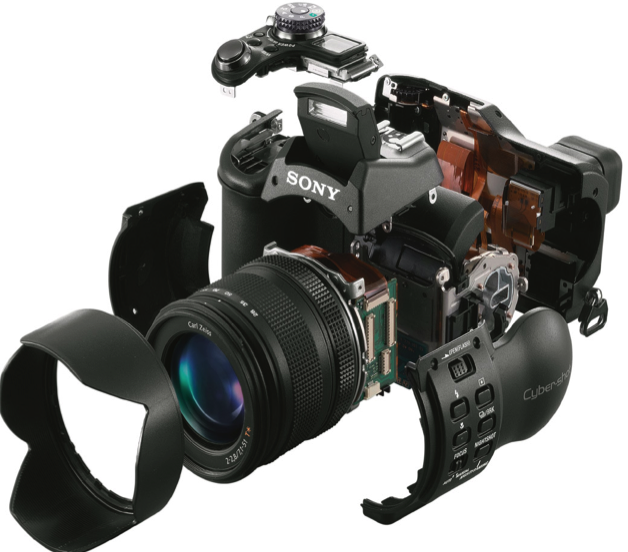what are the components of a camera?

Hey there, photography enthusiast! Ever wondered what's inside that marvelous gadget you carry around to capture memories? I mean, beyond the big lens and buttons? Dive in with me as we uncover the ins and outs of a camera, metaphorically speaking, of course!
Body and Exterior
The outside of a camera is like the cover of a book. It hints at the story inside.
Structure and Material
Most cameras have a metal or plastic body. But why? Durability and lightweight are the keywords here! They're tough enough to withstand a bump or two and light enough for those long photo-walks.
Button Layout
You've got the shutter release, mode dial, and maybe a joystick or touch screen. These buttons and controls? They’re the bridge between you and the magic happening inside.
Internal Mechanics
Here's where the real magic happens. Think of it as the heart and soul of your camera.
Shutter Mechanism
The shutter? It's like an eyelid. It opens and closes to let light in. The faster it blinks, the less light enters. Simple, right?
Mirror Box (in DSLRs)
Only in DSLRs, this mirror reflects the scene into the viewfinder. It's like peeking into a tiny periscope!
Optical Components
Lenses and apertures. They are the eyes of your camera.
Lens System
Here's a fun fact: there's not just one lens inside that big tube; there's a series of them!
Prime vs. Zoom Lenses
Prime lenses have one focal length (like 50mm) – they see the world from one perspective. Zoom lenses? They’re the versatile buddies that can view things from different distances.
Aperture
Ever seen those cool shots with a blurry background? That’s the aperture at work. Imagine squinting to focus on something – that's what your camera does with the aperture!
Electronic Components
Digital magic happens here.
Image Sensor
It's like an electronic canvas where the image paints itself. The bigger the canvas (sensor), the clearer the masterpiece.
Circuitry
This part is the brain that processes the image, tweaking the colors, brightness, and more.
Viewing System
How do you see what you’re shooting?
Optical Viewfinder
It's like looking through a window – direct and clear.
Electronic Viewfinder
This one's like a mini TV screen inside your camera – showing you the scene with digital clarity.
Storage and Connectivity
Memory Card Slot
The diary of the camera where all the photos get stored. And guess what? It's removable!
Ports and Wireless Connectivity
Connect to a PC, a TV, or even your smartphone. It’s all about sharing those captured moments, isn't it?
That was a fun journey, wasn’t it? To think, all of these components work in harmony for that perfect shot. The world of cameras is vast and intriguing, and the more you know, the better your photos might just become!
FAQs
- Why do DSLRs have mirrors but mirrorless cameras don't?
DSLRs use mirrors to reflect light to the optical viewfinder. Mirrorless cameras don't have this mechanism and instead, directly display the image electronically. - Does a bigger sensor mean better photo quality?
Generally, yes! Bigger sensors can capture more light and detail, leading to better image quality, especially in low-light situations. - What's the difference between aperture and shutter speed?
Aperture controls how much light enters the camera and influences depth of field. Shutter speed controls how long the sensor is exposed to light and affects motion capture. - Why are there so many buttons on a camera?
Each button has a specific function or shortcut to make photography faster and more efficient. The more you learn, the more you'll appreciate them! - Can I use any lens on any camera?
Not always. Lenses are often brand and model specific. However, there are adapters available for certain lens-camera combinations.
Happy shooting! 📸